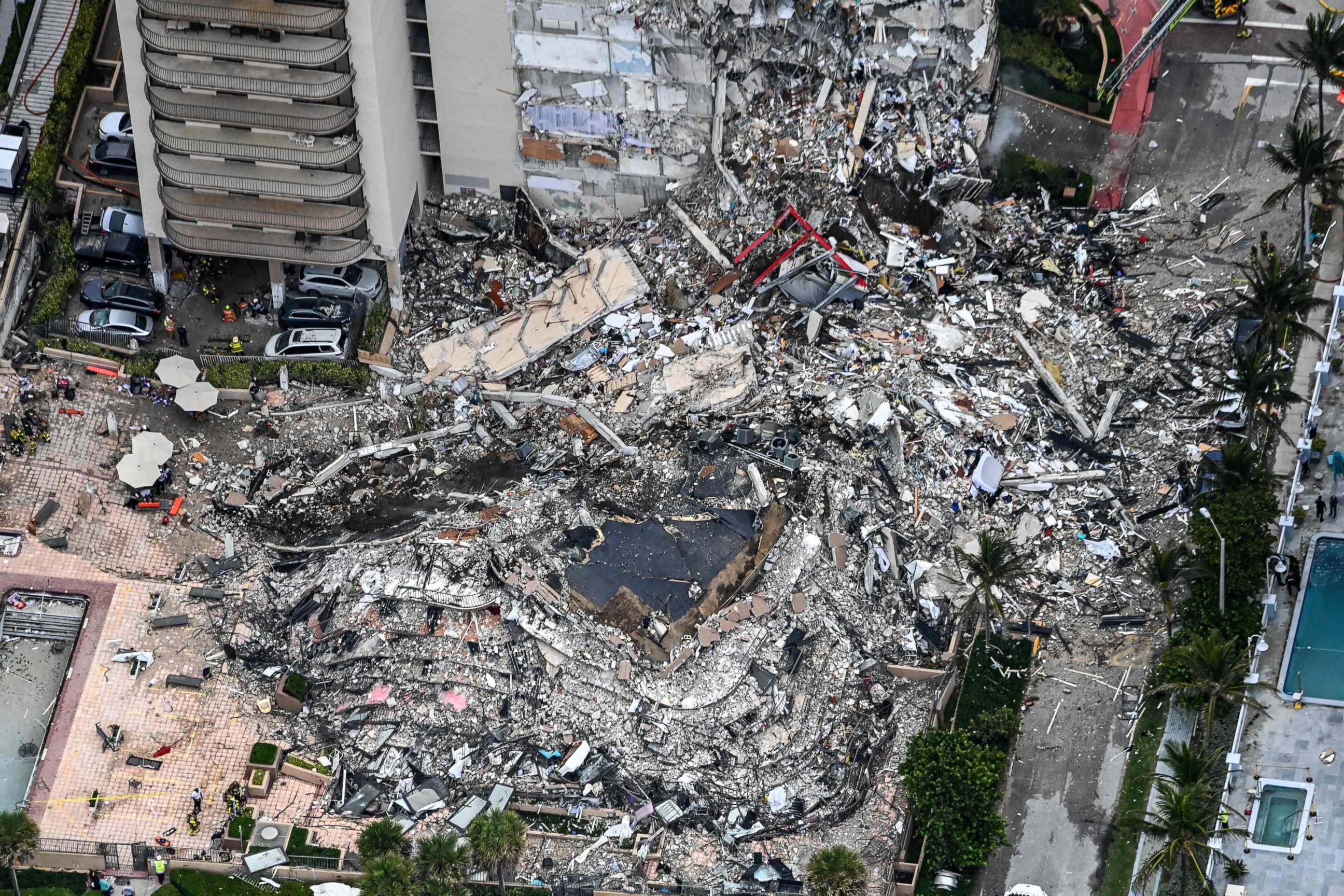Pool deck, garage ceilings of collapsed Surfside building were problematic as early as 1996, documents show
There are at least 95 confirmed deaths from the collapse.
A series of construction permit records, letters and other documents from more than two decades ago show that Champlain Towers South was in need of waterproofing and structural repairs in the parking garage just 15 years after the original construction of the building.
The documents released by the Town of Surfside, Florida, on Tuesday show that the pool deck of the Surfside condo building that collapsed last month and the ceiling of the underground parking garage beneath it had needed repairs as early as 1996.
“The scope of work will be concrete structural repair in the parking garage,” wrote Rob Sommer, sales manager for Western Waterproofing Company of America to the Surfside Building Department in March 1996. “This type of repair entails removing loose concrete overhead, treating steel rebar with rust inhibitive coating and patching back with repair mortar. Also included in the garage will be urethane foam injection in ceiling cracks.”
Tong Le, the project engineer contracted for the repair work, estimated the project to cost roughly $156,600.
Later in November 1997, Le wrote to Surfside’s Building Department that the deck was waterproofed and that approximately 20 square-foot of spalls in the ceiling of the garage had been repaired. Le wrote that the “repair of the spallings has been done in compliance with the approved” regulations.

Le did not respond to ABC News’ request for comment.
ABC News previously reported that a 2018 Structural Field Survey report released by the city of Surfside found “major structural damage” to concrete structural slabs on the pool deck and failed waterproofing in parts of the tower.
In his report, engineer Frank Morabito said previous repair work in the garage had been “ineffective.”
Allyn Kilsheimer, an engineer hired by the Town of Surfside to investigate the collapse of the building, cautioned against directly linking the repair work from 1996 and the deficiencies cited in Morabito’s report, telling ABC News that it’s not yet known if they were referring to the same specific areas.
Engineering experts offered differing views on how concerning the repair work from 1996 was and how it could have contributed to the building collapse.
“It is not normal,” said Joel Figueroa-Vallines, an Orlando-based forensic structural engineer and president of SEP Engineers, of the documents. “Generally, the life of a structure is much longer than that. Life cycles of concrete structures can be over 50 years, so this is very concerning.”

Figueroa-Vallines told ABC News that cracking can reveal structural issues and added that whenever there is cracking on concrete, “there is stress where it shouldn’t be.”
“..The fact that there were a lot of cracks on a structural slab, that tells me that something was going on in that pool area,” said Figueroa-Vallines. “On top of the fact that the pool area is the highest loaded area of the whole building.”
Meanwhile, Kilsheimer said the damages and repairs described in the 1996 permit documents are “normal” and “expected,” especially in Surfside’s environment, where buildings are prone to heavier corrosion from the adjacent seawater.
Shankar Nair, a Chicago-based engineering expert, told ABC News that the deficiencies and repair work cited in the 1996 permit documents are “not common” but also “not extremely rare.”
“This type of concrete deterioration does not usually lead to sudden catastrophic collapse, but there is a lot about this collapse that is unusual, if not unique.”
Crews are continuing their recovery efforts after the remaining parts of the partially collapsed building were demolished last week.
So far there are at least 95 confirmed deaths from the collapse. As of Tuesday morning, 85 of those 95 victims have been identified. There are still 14 people potentially unaccounted for, Miami-Dade Mayor Daniella Cava said at a press conference Tuesday.




